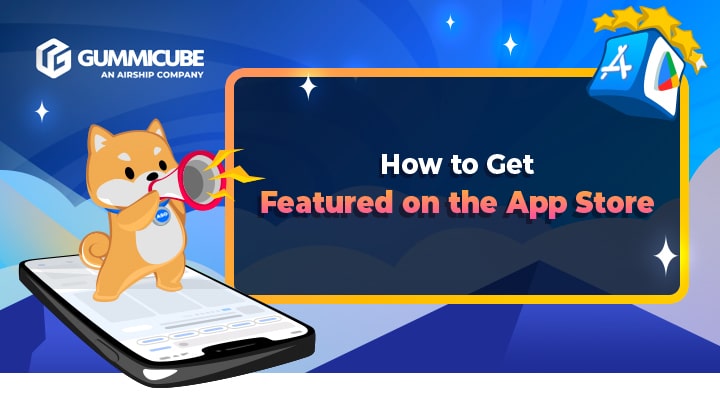If you think about “holy grails” in the App Store from a mobile marketing perspective, there are a few things that come to mind:
- #1 ranking for your most important keyword
- 100% conversion rate across every owned channel
- $0.01 CPIs
Another “holy grail” people may consider (and slightly more tangible) would be the illustrious App Store feature – placements on the App Store beyond the search results. Coveted by every developer and notoriously hard to land, a featuring placement could be the catalyst your app needs to really take off.
When a user first opens up the App Store, their intent is to either find something that interests them or find something that they need. Those first pages a user will see can add hundreds of thousands, if not millions of impressions. Along those same lines, if the users like your app, the downloads will come soon thereafter.
The question is: how can you secure one of these spots for yourself? While any app can be chosen to be listed on the Today Tab, Apps Tab, or within your respective category’s page – these positions are elusive to acquire.
Today, we’ll break down a few things you can consider to increase your chances of being selected.
How it Works
Apple has an editorial team dedicated to seeking out apps that lend themselves to current trends, seasonality or even their own editorial calendar. From Apple’s perspective, they aim to put apps in front of the right audiences at the right time:
The App Store has a global team focused on helping users discover and engage with apps and games that fit their needs. Campaigns and programs are created to help, inform, and inspire users while also helping you drive downloads and redownloads. Our worldwide team of editors curates selections on the App Store for each Apple platform in order to help your app or game get in front of the right users, in the right places, at the right times.
Source: Apple
You probably also see a lot of the same apps being featured over and over again, like Pokemon Go or Snapchat. These apps (amongst the others that Apple features) are all hand-picked, with the Editorial team reaching out to developers directly to hear their story and gather their assets for these newsworthy spots.
These placements are great for the apps that are chosen, but they oftentimes leave every other app in the dust, trying to figure out different avenues to gain the App Store feature that could make or break their app.
How can I increase my chances?
Apple has stated many of the things it looks out for when it comes to selecting an app, but one of the most crucial things comes down to something easily managed:
App Store product page. Compelling screenshots, app previews, and descriptions, as well as ratings and reviews.
Your app can have the best user experience possible, but without an optimized product page, your chances fall from little to none.
Optimizing Your Product Page
App Store Optimization essentially takes care of all of this. An understanding of what your audience searches with and converts on is what you would build an ASO strategy upon.
Leveraging app store intelligence tools like DATACUBE allow you to see the exact search trends occurring in the store, relative to your app and your demographic.
Adhering to the main tenets of ASO easily provide you with the following:
- An optimized App Title that expresses app functionality, complimentary to your brand
- An optimized Subtitle that further expands on functionality in a simplified manner
- A keyword bank that is form-fitted to your functionality and demographic
- Creatives (Screenshots, Videos, Icons) that are easy to read and accurately reflect product truth
Without the above, Apple will likely find very little reason to feature your app or product. Apple has already shown that they prioritize apps that are designed well, from within the app all the way to its app listing.
If we take a look at the non-game apps in the 2024 Design Awards story (another editorial placement from the Apple Team) they all follow the same layout:
- Their title and subtitles offer clear explanations of overall app functionality and/or the main subjects/actions a user can complete with the app.
- As an example, each applicable Subtitle all feature high volume keywords that are often used by users to find apps similar to those listed
- As an example, each applicable Subtitle all feature high volume keywords that are often used by users to find apps similar to those listed
- The creative all includes different pieces of the user experience to better illustrate how the app works and how a user can benefit from usage
- If we take a look at NYT Games’ screenshots, all screenshots include a clear view of gameplay and also incorporate keyword-dense copy in the creative itself, building a better connection between a user search and app functionality.
If your app contains localized components (UI, content, etc.), it’ll be important to show these off on your product page by utilizing Apple’s localizations. Enable the languages that your app supports and edit the app information to contain the above information, but localized into each language and for every geo you support. The more relevant your content is, the more likely users from that locale would convert.
Your aim with your product page is to make Apple’s life easier in reviewing your app’s merits. Following ASO best practices for metadata and creative already puts you in the best position possible for user discoverability, inside the search results and beyond.
Coming Soon: Feature Nominations
At the latest WWDC, Apple announced that App Store Connect will feature a new area for you to get in direct contact with the Apple editorial team.
Featuring Nominations allow you to share upcoming plans for your App. They’re created and managed within App Store Connect with the important details about the feature or content you’re introducing. And finally, Featuring Nominations are reviewed by the Editorial team and each submission is considered for featuring on the App Store. Featuring Nominations are related to releases and updates you are making for your app.
Source: Apple
What remains unknown is how Apple will support developers with their submissions. As of current, many developers need to reach out to a web of Apple contacts, between Apple Representatives tied to ongoing Apple Search Ads campaigns or with a pre-established connection with the business partnerships team.
It goes without saying that Apple will receive a lot of submissions the moment this is released, but with a fine-tuned product page and a compelling narrative around your app update and/or seasonal relevance, your app could potentially see those millions of impressions and hopefully, thousands of installs.
Conclusion
Trying to get your app featured on the iOS App Store is not a total dead end. Exhausting your ways of optimizing your app presence and connections with Apple can potentially put your app in front of the audience it deserves. Hopefully, with the upcoming release of Feature Nominations, the App Store will see much more diversity in its editorial selections and provide new and exceptional apps the opportunity to reach a greater audience.







Comments
Loading…